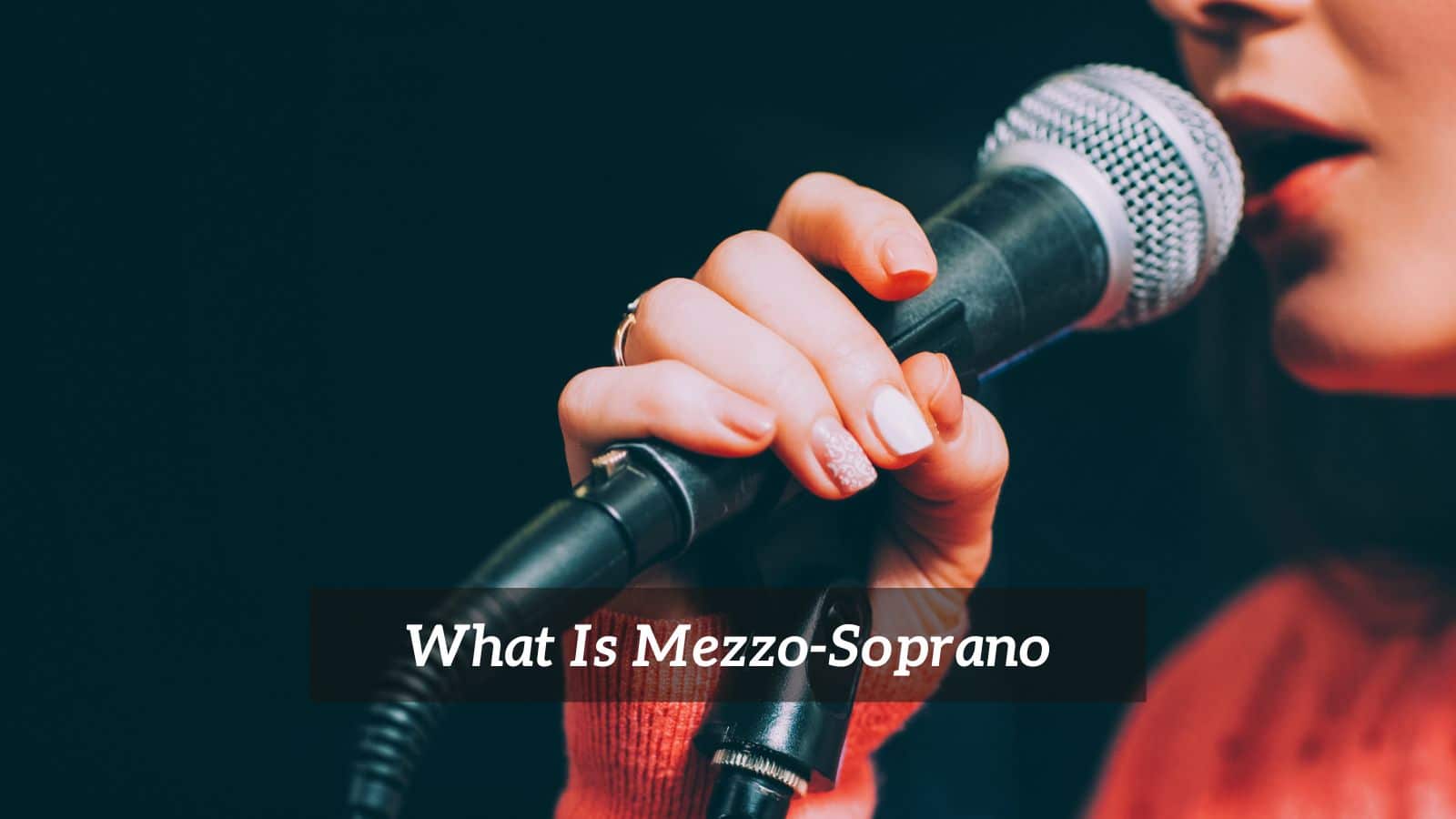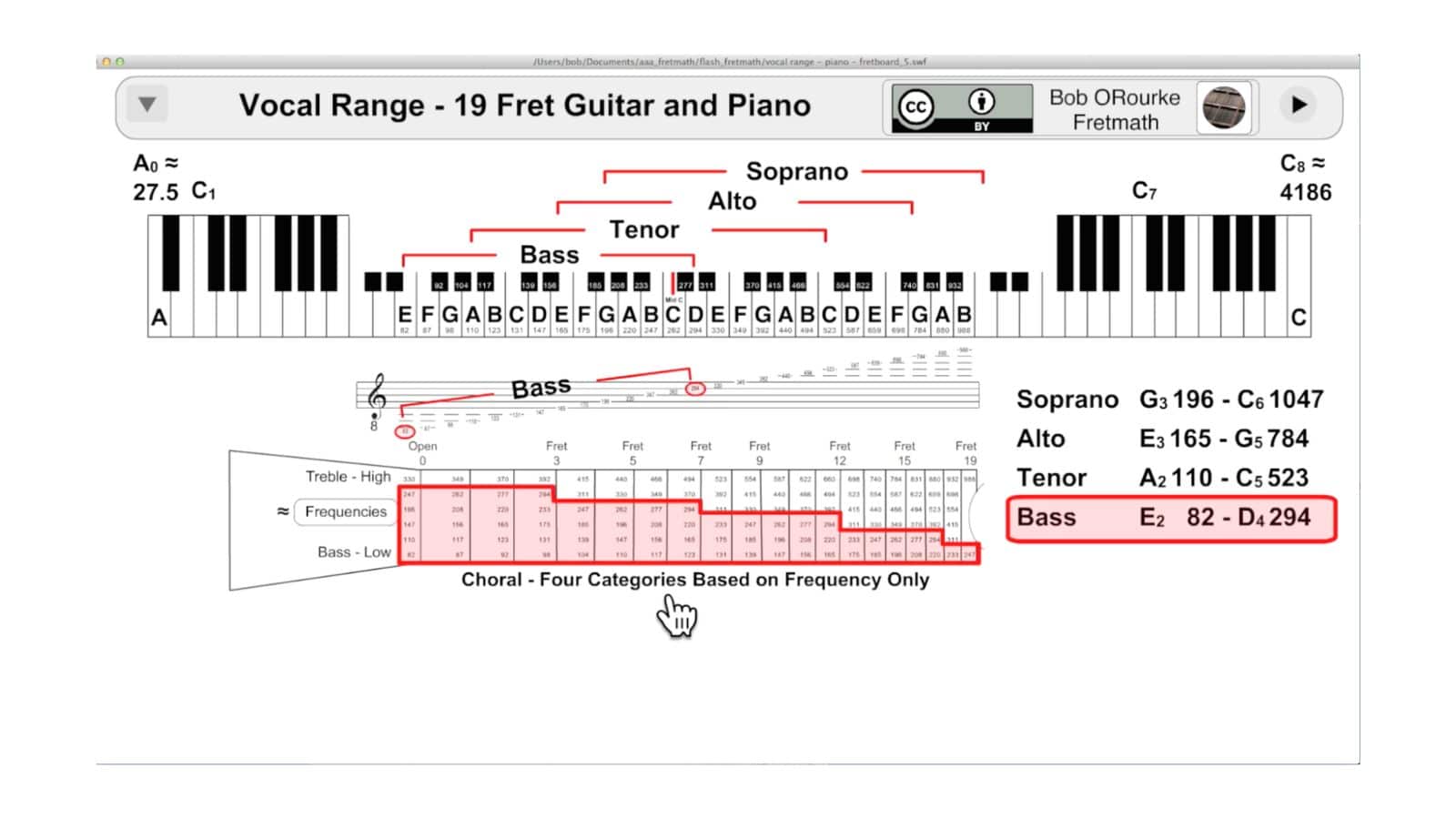
There are many different types of human voices. Everyone also has their unique timbre or sonority. Each human voice has a range with some far greater than others, some claiming as much as seven octaves which comes close to the range of a piano.
Commonly, human voice types and ranges fall into four categories from the lowest to the highest. These categories are as follows: Bass, Tenor, Alto, and Soprano.
Voices naturally come in other types too, some fitting in between these four ranges including the countertenor or the baritone for example. The countertenor is closer to the alto in range but not in timbre, whereas the baritone is between the bass and the tenor
For other voices, it is challenging to find an exact fit so a compromise in descriptive terms is usually reached.
Bass and Tenor voices are most commonly male although there is the female tenor voice that often proves extremely useful to choral groups that don’t have sufficient male equivalents. Again, the female tenor has a special timbre with each singer offering their special variation too.
This leaves the Alto and Soprano voices. Like the Bass and Tenor, these are the domain of the females taking as they regularly do, the upper range of notes. The soprano is at the very top stretching up to a ‘C’ two octaves above the middle C on the piano.
Countertenors slot in around the female alto range often being compared to the contralto but some countertenors specialise in even higher vocal ranges matching that of the female soprano.
This is notably less common. Interestingly, the countertenor ‘natural’ voice type is quite often a baritone or even bass but as a performer, they use the higher end of their vocal range.
These vocal ranges are used for describing vocalists that could be considered to be classically trained such as opera singers, although the ranges can equally apply to voice types across the spectrum of genres.
Sometimes voices are simply referred to as high and low voices, the decision about the sex of the singer is therefore irrelevant. In a choral situation then, the SATB motif is in common use denoting the four vocal categories detailed above.
What Is Mezzo-Soprano
Let’s track back to the highest of the voices; the soprano. This voice type is not as frequently encountered as you might think. Most female voices lie somewhere between alto and soprano with a slant towards the lower end of the vocal tessitura
Whilst some female voices have a leaning towards soprano, it often takes years of intense training for a woman to become a soprano singer.
Before heading further into this arena, I feel I ought to mention the male soprano or properly titled castrati. This barbaric practice found curious favour during the 16th and 17th centuries leaving many young boys destroyed by the lure of fame and fortune.
The fashion for castrati thankfully died out but it is said that they could match the range of a soprano but deliver with the power of a male voice. This gave the castrati great presence, a completely unique timbre and some huge wealth and status.
The female soprano broadly speaking has a range that spans C4 – C6. Voices are different and the ranges of each are frequently larger than that shown. Soprano is not, however, a single voice type. It’s a little more involved and takes its lead from the world of opera.
It is generally agreed that the soprano voice divides into five sub-categories as follows: coloratura, soubrette, lyric, spinto and dramatic. Coloratura soprano refers to a female voice that exhibits remarkable flexibility, especially towards the top end of the range.
This range can be extended to reach notes as high as F6 that alarmingly occur often in opera. The technical virtuosity that comes with this soprano voice is well accounted for in the operatic world.
Listen to Mozart‘s ‘Marriage of Figaro’ or perhaps Donizetti’s ‘Lucia di Lammermoor’. There is a great power with the coloratura soprano.
Coloratura splits into two further categories; lyric and dramatic. The lyric coloratura has agility, power and speed of delivery at even the extreme ends of range whilst the dramatic soprano possesses more sustained power.
Some describe the lyric soprano as having a warm, richness to the voice that can be both dark and light but always highly expressive. Darker still is the dramatic soprano whose voice Richard Wagner or Verdi would have fully exploited with a projection over an entire orchestra.
Sometimes one finds that the young soprano is classed as having a soubrette voice. This means that the range comes neatly within the anticipated C4 – C6 compass. The power and flexibility might not yet be evident, nor any extension to the range.
As such, you will discover the soubrette soprano roles tend towards young characters and the kind of timbre that is expected for that age group. The works of Gilbert & Sullivan embrace this voice type beautifully.
Finally, we turn to the spinto soprano. With this kind of soprano, you hear a mixture of vocal timbres.
The brightness and clarity of tone are apparent alongside the range you might expect from the lyric soprano but there is a significant facility to push the voice to heighten the climactic points in an opera that the soubrette would likely not achieve.
This soprano is equally comfortable in the works of the Romantics and the Classical composers.
Last but certainly not least then comes the mezzo-soprano. As is so often the case in music, the Italian language dominates the terminology. This is a rich, beautiful type of soprano voice that literally translates to half soprano.
This in itself is not a good representation of the quality of this voice but is somewhat derogatory perhaps. The voice range of the mezzo-soprano is considered to be from around A3 – A5 but as with the other voice types, the range can be extended at either end.
In a similar way to the soprano voice, the mezzo-soprano can also be subdivided comparably into sub-categories that are largely parallel.
What significantly distinguishes the mezzo-soprano from the soprano is the timbre. With a darker, even chocolatey sonority, the roles designed for the mezzo-soprano are quite different.
One great example I find particularly important is that of the Sorceress from Henry Purcell’s ‘Dido and Aeneas’. Equally, listen to the part of Rosina from Rossini’s ‘Barber of Seville’.
The mezzo-soprano features throughout the Baroque, Classical and Romantic periods of music and is still very much in demand today.

